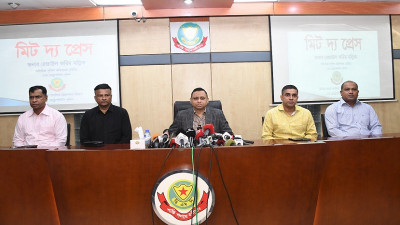 Photo: Bonik Barta (File Photo)
Photo: Bonik Barta (File Photo) Across
the country, the Bangladesh Small and Cottage Industries Corporation (BSCIC)
currently manages 82 industrial estates. Among them, eight new estates were
established post-COVID-19 pandemic. However, due to various challenges, the
majority of plots in five of these industrial estates remain unallocated.
Industry experts believe the ongoing economic crisis has discouraged
entrepreneurs from investing in these estates.
BSCIC
has a total of 12,311 industrial plots nationwide, of which 1,084 plots remain
vacant. Of the unallocated plots, 73 percent, or 792 plots, were created
between 2021 and 2023.
Following
the COVID crisis, economic instability, a sharp rise in the dollar’s value, and limited credit flow to the private sector have affected the economy over the past few years. In the last year, political turmoil and unrest have further deterred investments in the small—and medium-sized enterprise (SME) sector,
experts noted.
“We
consistently establish industrial estates and allocate plots,” said Rabbani
Talukder, General Manager of BSCIC’s Industrial Estate and Coordination Department,
in an interview with Bonik Barta. “Over the past few years, we issued several
notices for plot allocations in the newly established industrial estates.
However, due to the overall situation in the country, we received limited
response,” he added.
He
noted that BSCIC recently issued another notice for plot allocation in vacant
estates, explaining, “Some large entrepreneurs have applied for multiple plots
at once, but BSCIC remains focused on allocating plots to small and
medium-sized enterprises. We expect the number of vacant plots to decrease by
the end of this year.”
BSCIC’s
data shows that the most severe crisis is in the BSCIC Electrical Goods
Manufacturing and Light Engineering Industrial Estate in Tongibari, Munshiganj.
Of the 361 plots created in 2021, only 20 have been allocated, leaving 341
plots vacant. In contrast, 100 percent of the 82 plots in Munshiganj’s old
BSCIC estate, established in 1996, are operational. Meanwhile, Rajshahi-2 BSCIC
Industrial Estate, established in 2022, has managed to allocate only 45 plots,
with 241 plots still vacant.
Gopalganj
(Expansion) BSCIC Industrial Estate, established in 2021, also faces
challenges. Only 38 of its 138 plots have been allocated. Two other estates
established in 2021—Chuadanga BSCIC and Barguna BSCIC—have 25 and 18
unallocated plots out of 78 and 60, respectively. However, the BSCIC estates
established in Bhairab (Kishoreganj) and Narsingdi (Expansion) in 2023 have
been more successful, with 229 of Bhairab’s 234 plots and 147 of Narsingdi’s
157 plots already allocated. Their proximity to the capital has been a key
factor in the faster allocation of plots.
BSCIC
officials pointed out that while selecting districts for establishing
industrial estates is crucial, it has not always been adhered to. In some
cases, estates were set up in areas with low demand for plots due to political
considerations, leading to an increase in vacant plots.
According
to a BSCIC report published this July, its 82 industrial estates nationwide
cover 2,515.8 acres of land and employ 632,189 people, including 331,284 men and 309,005 women. Officials believe that if the 1,084
vacant plots are utilized, an additional 100,000 jobs could be created.
The most recent allocation notice was issued on March 6, targeting 1,003 plots in 20 industrial estates nationwide. However, due to the ongoing crises, entrepreneurs’ response has been lower than expected.






